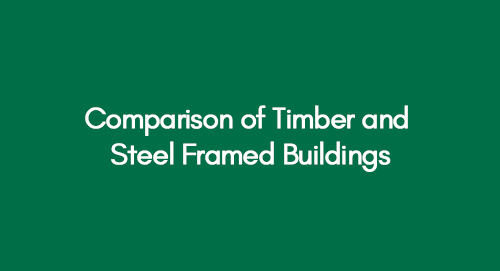In the dance of construction materials, comparing timber and steel framed buildings unveils a symphony of resilience and flexibility, where wood whispers tradition, and steel echoes the future in the harmonized architecture of choice.
Outline
- Introduction
- Literature Review
- Timber Frame
- Steel Frame
- Comparison
- Methodology
- Findings
- Analysis and Discussions
- Conclusion
- References
Choosing the right building material and framing system is critical to any construction project, significantly influencing a structure's overall strength, durability, and performance. Among the various options available, timber and steel stand out as two popular choices for framing. The following paragraphs will delve into timber and steel-framed buildings' distinctive characteristics, advantages, and drawbacks. By understanding the key features of each option, you can make an informed decision tailored to your construction project's specific needs and requirements.
Delve deeper into the examination of the distinctions between timber and steel-framed buildings.
Timber-framed buildings have become popular, driven by their sustainability and timeless aesthetic appeal. One notable advantage of timber is its renewable nature, with responsible forestry practices ensuring a continuous and eco-friendly supply. Additionally, timber's natural insulating properties contribute to excellent thermal performance, making it an energy-efficient choice. The aesthetic flexibility of timber allows for diverse architectural styles, creating warm and inviting interiors. Moreover, the ease of construction, combined with a lighter weight than steel, facilitates efficient on-site assembly, contributing to shorter construction timelines. Despite these advantages, timber comes with considerations such as susceptibility to pests and decay, which must be carefully managed in construction.
Introduction
In recent decades, the construction industry has witnessed continuous progress, marked by significant advancements in research and development within civil engineering. These efforts have introduced innovative and sustainable construction methods, showcasing state-of-the-art technology. Architects and engineers are committed to creating structures with diverse resident amenities, emphasising construction time, building sustainability, costs, and high-quality construction materials.
Among the various influential factors in construction projects, the choice of frames plays a pivotal role. The selection of framing materials involves carefully considering costs, weight, accessibility, sustainability, and durability. This critical review aims to determine the most suitable frame and material for constructing a two-storey residential building, presenting a detailed assessment that encompasses both qualitative and quantitative data collected in subsequent chapters.
While concrete technology has been widely used in construction, certain drawbacks have been identified. Structures produced using concrete technology may develop cracks due to shrinkage during the drying-out period. Additionally, the low thermal conductivity of concrete makes it less favourable in certain construction scenarios, as intense heat can cause serious damage to the material and the building. Exposure to seawater or vapours has been found to lead to concrete corrosion. Moreover, the preparation and application of concrete require extensive time durations. Furthermore, concrete has a high rate of hazardous emissions, including NOx, COx, and particulate matter, leading to condemnation by environmental safety standards associations such as the UK's Reduce Your CO2 (2007).
Timber and Steel Frames
In construction, timber and steel frames stand out as two of the most widely embraced types, each with advantages and disadvantages. Steel, recognized as the most recycled material on Earth, contrasts with timber, which is hailed as the ultimate renewable resource.
Given these considerations, the researcher has opted to analyse timber and steel frames as construction methods for a two-storey building. The intention is to comprehensively examine these construction materials and produce a comprehensive document as a valuable guide for researchers, architects, and builders. This document will encapsulate all information regarding these crucial and sustainable frame construction materials.
The primary objective of this dissertation is to explore the adoption and comparison of steel and timber-framed buildings. This investigation aims to determine which frame is most suitable for a two-storey residential flat.
Literature Review
Within this section, the focus has been on two construction methods: timber and steel frames. While alternative methods, such as concrete technology, exist, they often fall short compared to the selected timber and steel frame options. In terms of sustainability, both timber and steel frames are acknowledged as the most environmentally sustainable materials.
Timber Frame
The timber frame construction method is widely employed for creating natural structures. It involves using substantial wood beams and intricately interconnected posts through interlocking joints secured with wooden pegs. Typically, the load of the roofs is transmitted to the foundations, eliminating the need for interior partition walls solely for load-bearing purposes. Timber-built structures are characterized by their low weight, self-supporting nature, and the ability to achieve strong and durable constructions through precision engineering.
The appeal of timber construction lies in its readily available supply, frame durability and strength, quick and straightforward construction process, and visually pleasing aesthetics. The versatility of timber frames allows for their application in various structures, including flats, houses, high-rise buildings, and more (Timbercraft, 2013; TRADA, 2011).
Numerous economies favour using timber-framed buildings for their energy efficiency, cost-effectiveness, and sustainability. Major economies such as Germany, Sweden, Scotland, Japan, the USA, Canada, and Austria widely adopt this construction method. Timber frames are known for their ease of erection, contributing to shorter construction times. The Benfield ATT Group has recognized timber as the sole renewable material in the construction industry (FSC Timber Frame, 2013). Additionally, the Timber Research and Development Association (TRADA, 2011) has officially designated timber as a renewable material for construction purposes.
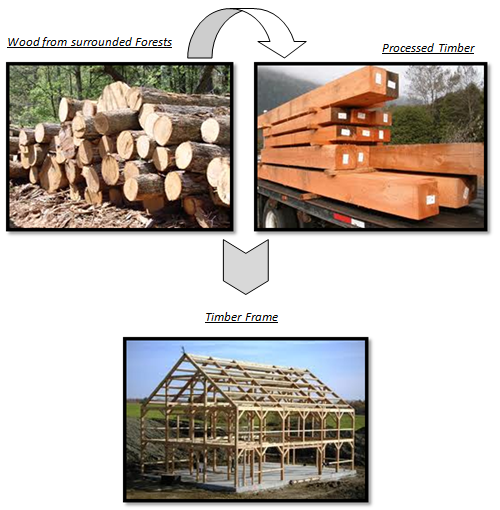
Figure 1: Process Flow for Timber Frames (Author and Google image)
Throughout history, timber has been a fundamental material for structural frames across various parts of the world, with a legacy spanning centuries. In Europe, this method was considered a foundational approach to construction. Notably, structures such as churches, castles, homes, and manors have been, and continue to be, crafted using timber. The enduring and robust characteristics of timber structures have contributed to their enduring presence in the historical fabric of many European cultures.
The use of timber as a primary construction material extends well into the 20th century, with countries like Japan, China, and others adopting timber frames for their houses. The Isle Shrine is a testament to this historical use, believed to have been built in 690 AD (Timbercraft, 2013). Remarkably, Britain boasts many intriguing and ancient timber-framed buildings. Churches, barns, and homes predominantly employed this construction method. The 13th and 14th centuries are particularly noteworthy periods for timber-framed buildings in history. Despite numerous alterations, decay, and repairs, many buildings still stand today, showcasing timber structures' proven durability and strength that often surpass expected lifespans.
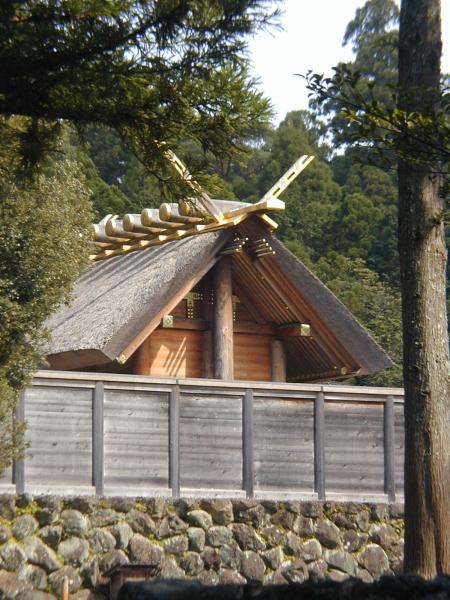
Figure 2I: sle Shrine (Google Image)
The abundance of forests surrounding Britain played a pivotal role in the growing popularity of timber-frame construction methods. The proximity of these forests made the raw materials for timber frames easily accessible, eliminating the need for importing from foreign countries. The straightforward, uncomplicated, and rapid erection procedures associated with constructing timber frames contributed to the prevalence of timber-structured homes, particularly in Scotland. Regions with colder climates find timber structures advantageous as they provide building insulation and strength (Solotimberframe, 2010).
The timber framing tradition originated in Europe and was passed down through generations after European immigration to North America. The untouched forests in North America provided ample wood for constructing buildings, facilitating the continuous development of construction skills (Whistler, 2011). However, the persistent deforestation in Britain has led to a gradual decline in local timber supply. The lack of reforestation efforts has further diminished the availability of timber, necessitating the transportation of wood from North America to Britain. It's worth noting that until the 19th century, timber framing was the primary construction method in North America (Timbercraft, 2013).
Timber Properties
Timber has been a prominent construction material for centuries, subject to extensive research to understand its properties. In 1976, Richardson categorized the construction material into two main groups: hardwoods and softwoods derived from coniferous trees. Each type of wood possesses distinct characteristics, making it essential to select the appropriate type based on structural requirements. The critical properties considered during construction encompass strength, durability, permeability, moisture content, appearance, and fire resistance.
Moisture Content
Moisture content in wood refers to the total amount of water present. Wood drying, a process aimed at removing moisture from wood before its use in construction, is crucial for various reasons. It is essential to achieve equilibrium between the wood's moisture and the surrounding environment through absorption and desorption. The benefits of wood drying include:
- Increased strength in wood with lower moisture content.
- Cost reduction in shipping due to decreased weight.
- Reduced decay during usage, storage, and transport.
- Lower susceptibility to insect attacks compared to wood with higher moisture content.
Implementing proper care techniques enhances the life and strength of wood. Therefore, controlling moisture content is vital to safeguard timber from the harmful effects of insects, fungi, and subsequent decay (Reeb, 1997).
Strength
With its diverse types, Timber exhibits varying characteristics, particularly in strength. The strength of wood is categorized into different classes, with softwoods falling within the range of C14 to C50 and hardwoods from D18 to D70. Among the softwoods, C14 and C16 represent the weakest strength classes, while C24 is the most commonly utilized strength class in construction. Grading methods for these classes involve either machinery or visual inspections. Various factors, including shakes, knots, splits, grains, and wane, can be considered to modify the strength of timber as needed (TRADA, 2006; Richardson, 1976).
Types of Timber Frames
Timber frames come in various types, each showcasing distinctive characteristics in construction. From the traditional post-and-beam structures to the more intricate braced frames and the space-efficient balloon frames to the sturdy and resilient truss frames, the diversity of timber frames offers architects and builders a rich palette for creating unique and tailored structures that stand the test of time.
Post and Beam
The construction technique employing horizontal beams and vertical posts is called the post-and-beam method, illustrated in the accompanying figure. Joining the beams through tenon and mortise connections forms the structural foundation of the entire building. Popular in the 1800s, this method involved creating levels for constructing beams and posts. Each floor operated independently and was erected sequentially (Davis, 2013). However, by 1830, this construction method witnessed a decline. One contributing factor was the demand for substantial timber pieces for the posts and beams. The decreasing availability of high-quality timber resulted in heightened costs attributed to shortages (Nassén et al., 2012).
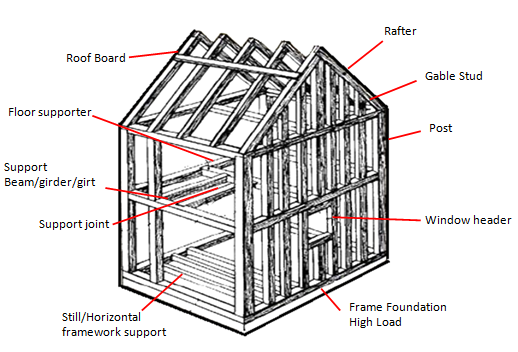
Figure 3: Post and Beam Framing (Author)
As a result, the post-and-beam construction method became increasingly costly, marked by a continuous rise in expertise and labour expenses associated with this framing approach. The intensive labour involved in this building system further contributed to its elevated costs. These factors collectively led to a gradual reduction in the implementation of the post-and-beam construction method (Ehow, 2013).
Platform Framing
The widespread use of platform framing in Canada and the USA can be attributed to its straightforward construction process. In the early 19th century, platform framing gained popularity in Great Britain. This construction technique, illustrated in the figure, is primarily employed to construct houses and other small buildings. The framing system involves resting floor joists from each storey on the top plates of the sill of the foundation for the first storey or on the lower storey. The subfloors of each storey support partition walls and walls within the structure.
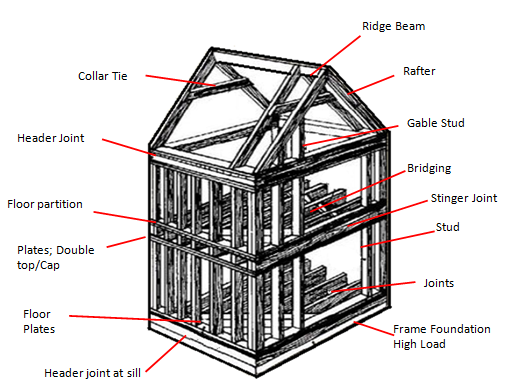
Figure 4: Platform Framing (Author)
Typically, a platform is constructed as a single storey and extended upward to form the entire structure, reaching the roof. Exterior walls are fashioned using storey studs, which shape additional floors and walls. These storey wall studs connect the floor joists to create upper floors (Home, 2013). This construction method boasts numerous advantages, including its speed, simplicity, and safety in the erection and shaping of buildings. Notably, it is a cost-effective option compared to other construction methods (TRADA, 2002).
Balloon Framing
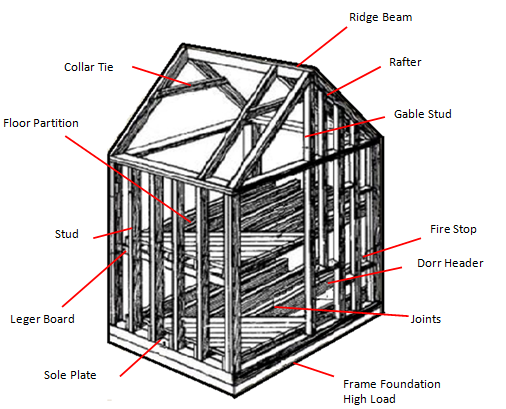
Figure 5: Balloon Framing (Author)
The demand for studs or lengthy framing members has diminished the popularity of the balloon framing procedure due to the difficulty and increased expense associated with obtaining these studs. Additionally, this construction type has been observed to facilitate the rapid spread of fire, posing a heightened risk of structural destruction within minutes. The increased height and weight of walls have rendered the construction process challenging, leading to reduced popularity and limited applicability in various circumstances (American Wood Council, 2001).
Cost
The evaluation of frame construction costs hinges on various factors, encompassing frame design, construction location, timber quality, labour costs, and more. The price of timber fluctuates as a consequence of these diverse elements. A significant price surge occurs when the product's supply and demand are high, especially for high-quality, lengthy, hard timber. Additionally, the choice of contractors involved in building structures influences the cost of timber framing. Timber's per square meter price ranges from £500 to £2100 (Homebuilding, 2001).
Sustainability
Regarding sustainability, timber stands out as one of the top materials with high environmental credentials. Its notable sustainability is primarily attributed to its renewable nature. However, a growing concern revolves around continuous carbon dioxide emissions. Buildings significantly contribute to carbon dioxide emissions, underscoring the importance of assessing and controlling these emissions during construction. According to UK building regulation standards, constructing a house can produce approximately 4 tons of carbon dioxide (Sustainable Homes, 2013). Evaluating building materials becomes crucial in managing carbon dioxide emissions over the entire lifespan of a building.
Timber emerges as a solution to reduce carbon dioxide emissions significantly, being considered one of the most sustainable construction materials. Trees, integral components of the environment, play a vital role in this reduction by extracting carbon dioxide from the atmosphere. Trees absorb carbon dioxide from the atmosphere and store it in their trunks, contributing to environmental well-being. More trees' presence enhances carbon dioxide extraction from the environment (Reduce Your CO2, 2007). It's important to note that the carbon dioxide emissions from timber increase during decay or burning conditions.
Advantages of Timber Frame
Timber framing offers many advantages, making it a widely applied construction method globally. Here are some of its key benefits:
Rapid Construction: Timber frames, being pre-fabricated, enable quick and easy erection. Studies indicate that timber frame construction is 20% faster than alternative methods, leading to expedited construction. This efficiency saves time and reduces disruption to the local area and labour costs. Importantly, timber frames are not weather-dependent, allowing consistent production throughout the year (Environ, 2013).
Versatility in Application: Timber frames can be utilized for various structures, ranging from hospitals, schools, mansions, and houses to blocks of flats and hotels. They are particularly suitable for areas with challenging soil conditions.
Structural Strength: The weight of timber frames is strategically transferred to the ground, enhancing the strength of the buildings. This reinforcement is crucial for withstanding heavy snow loads, earthquakes, and hurricanes.
Cost-Effective: Timber frames are notably more economical compared to other frame types. The return on investment is higher due to quicker construction, reduced labour costs, and minimal waste production. Additionally, their lightweight nature results in significant cost savings in foundation construction.
Durability and Longevity: Timber-framed houses and flats exhibit robustness and durability, surpassing the lifespan of many modern construction materials. According to Environ (2013) and Scotframe (2013), timber frame structures are designed to last over fifty years, meeting building codes and requirements.
Environmental Sustainability: Timber is an environmentally friendly material known for its sustainability and renewability. Forests in regions like Great Britain, Scandinavia, and North America are the primary sources of timber. As trees are harvested, new ones are planted to maintain the resource. Timber frame construction is recognized for producing lower carbon dioxide emissions than other materials, contributing to environmental conservation. By opting for timber frames in construction, significant control over environmental impact can be achieved (Environ, 2013).
Disadvantages of Timber frames
Despite its many advantages, using timber frames in construction has disadvantages. Some of these drawbacks are outlined below:
Limited Awareness and Skilled Labor: With the prevalence of steel frames in modern construction, finding individuals with expertise in timber frame construction has become increasingly challenging. Inexperienced labourers lacking knowledge about this construction method can lead to numerous problems. Essential safety aspects, such as moisture protection and fire stopping, must not be overlooked during timber frame construction (TargetTimber, 2013).
Fire Hazard: Timber is susceptible to catching fire easily. To mitigate this risk, it is crucial to implement appropriate fire protection measures. Enclosing timber frames in non-combustible materials is recommended to prevent potential fire disasters.
Vulnerability to Moisture: When exposed to water, timber frames can lose their shape and structural properties. Therefore, their use is not advisable in regions with excessive moisture. Decay is a significant issue that can adversely impact the strength and durability of timber. Installing an effective moisture protection system is imperative to ensure the safety and health of occupants within the building.
Pest Infestation: Timber frames are susceptible to infestation by termites and carpenter ants, compromising their strength and reliability. In the event of infestation, it may be necessary to replace the timber frame with an alternative construction system (Environ, 2013).
Steel Frame
Steel frames have become the predominant construction material in contemporary building practices, experiencing increasing demand. This construction method interlocks horizontal I-beams and vertical steel columns to support entire structures. Widely employed in structures requiring durability and reliability, such as warehouses, offices, stadiums, skyscrapers, manufacturing units, and bridges, steel frames are favoured for their lightness and swift erection time, making them a common choice for modern-day constructions (Lam et al., 2004).
While timber frames dominated the construction market in the early 1900s, steel frames have grown substantially over the last five to six decades. Most civil engineering and mechanical projects now opt for this extremely durable and lightweight construction material, given its rapid erection, durability, strength, and environmental benefits.
Steel frames were introduced in construction projects in Japan, where the material was readily available. With advantages such as non-flammability, durability, and strength, the steel frame industry experienced significant growth (Ehow, 2013).
In the United Kingdom, steel frames have been in use since 1950, becoming the preferred choice for buildings and homes following the success of this material in Japan. Similarly, in the United States, steel frames were not the primary method for construction until the early 1990s. The popularity of steel grew in the developed world due to its advantages, including non-flammability, durability, reliability, and energy efficiency.
Steel's properties make it an ideal choice for modern-day structures, and its 100% recyclability has significantly contributed to its popularity in recent years. Used in various applications worldwide, from buildings and homes to roads, railways, and kitchen appliances, steel is a versatile and constantly supplied material at an affordable price (TATA Steel, 2013). The following reasons contribute to steel becoming the preferred building material:
- Durability
- Reliability
- Recyclability
- Non-flammability
- Maintains properties when exposed to water or pests
Types of Steel Frames
Steel frames offer versatility in construction, with various types catering to specific needs. From the classic moment-resistant frame providing stability in seismic regions to the efficient braced frame distributing lateral loads and the sleek and adaptable steel stud frame commonly used in residential and commercial buildings, the diversity of steel frames ensures a tailored solution for every architectural and structural requirement.
Cold-Formed Steel Framing
Cold-formed steel (CFS) framing is preferred in seismic-prone areas like the United States. CFS framing is characterized by its strength, reliability, and ductility, making it well-suited for regions prone to seismic activity. Additionally, this framing type can be moulded into diverse sizes and shapes. Research indicates that CFS framing is manufactured through a process known as roll forming (Lam et al., 2004).
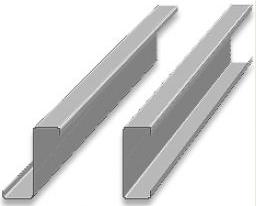
Figure 7: Cold-Formed Steel Frame Section (TATA Steel, 2013)
In this technique, steel sheets undergo shaping as a web, C-shape, or flange by passing through a series of rollers. As this process doesn't involve heat, the joints and studs must possess sufficient strength. The term "cold forming" is aptly used since no heat is employed in this method. The advantages of using Cold-Formed Steel (CFS) as a construction material include lower costs and maintaining its shape (TATA Steel, 2013). Moreover, its termite-resistant and non-combustible properties significantly contribute to cost reduction.

Figure 8: Cold-formed steel structure for a two-storey building (Naked Frames Ltd, 2013)
I-Bream Framing
While Cold-Formed Steel (CFS) framing offers advantages in residential construction, I-beam framing is the industry's most prevalent steel framing type. Similar to CFS framing, I-beam framing boasts several advantages, such as durability, strength, and cost-effectiveness.
The term "I-beam" derives from its visual resemblance to the letter "I." The webs and flanges in I-beam frames provide robust resistance to shear bending moments and shear forces. Engineered to endure substantial loads, I-beam frames come in various sizes, offering versatility in construction (Lam et al., 2004).
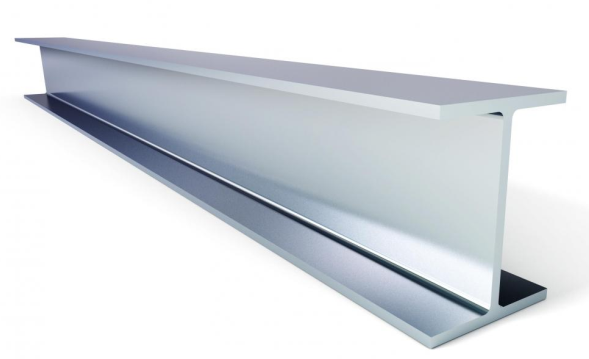
Figure 9: I-beam Steel Frame Section (Google Image)
Despite their ability to create expansive spaces, I-beam frames for building structures have certain drawbacks. Notably, this type of steel framing can pose several challenges when exposed to heat. To address safety concerns, engineers must incorporate insulation materials on the exterior.
Furthermore, I-beam frames exhibit substantial weight, requiring transportation with large machinery due to their considerable mass.
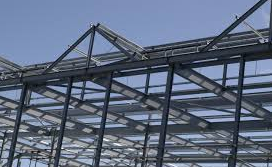
Figure 10: I-beam Steel structure (Google Image)
Volumetric Frame
In contrast to other steel frames erected on-site, volumetric frames are meticulously designed and manufactured off-site. Tailored to project requirements, they can be transported to the designated site using heavy machinery or a team of workers. The advantages of opting for volumetric frames are substantial, offering a cost-effective solution compared to other types of steel framing. Furthermore, they boast higher quality and reliability (Light Steel, 2013).
Volumetric steel frames, being lightweight, contribute to significantly reduced foundation costs. This lightweight and flexible nature empowers civil engineers to execute intricate designs easily. Noteworthy benefits of volumetric steel frames include:
- Non-combustible
- Environmentally friendly
- Enhanced sustainability
- Acceptable sound and thermal insulation
- 100 percent recyclable
- Swift and efficient construction
- High-quality product
- Cost-effectiveness
- Improved efficiency
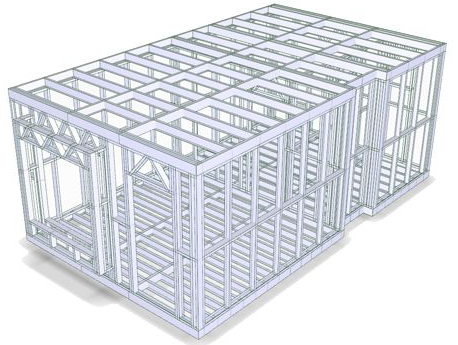
Figure 11: Volumetric Steel structure (Icarus, 2013)
Cost
Steel manufacturing costs have significantly decreased over the past few years as technology advances. What was once an expensive and unaffordable option, steel framing has become more cost-effective.
While steel remains pricier than timber or wood, it has become more affordable than it was a couple of decades ago. The expedited completion of construction projects using steel framing provides a superior rate of return on investment. Moreover, in a competitive labour market, installation and commissioning costs have seen a substantial reduction. Due to its enhanced strength-to-weight ratio, steel is preferred when constructing intricate large-scale structures like skyscrapers and bridges. It's accurate to state that steel frames deliver excellent value for money, and using lightweight steel can further contribute to reducing foundation costs if necessary (NASH, 2013).
Sustainability
Steel is an exceptionally sustainable construction material, ranking the most sustainable among various materials today. Its ability to retain properties allows recycling up to 1000 times if needed. TATA STEEL reports that nearly 95% of the steel used in the UK is directly recycled or reused, showcasing its impressive sustainability. Steel generates negligible waste compared to timber frames, which are entirely wasted when exposed to water or pests (TATA Steel, 2013).
Even the waste generated during the manufacturing process is reusable. Utilizing steel as a construction material is an excellent means of controlling waste in large civil engineering or construction projects. While steel may occasionally find its way to landfills, it is often reusable and demountable. Steel framing can be dismantled and repurposed if necessary for constructing another structure. Additionally, steel construction minimizes the generation of dirt, dust, or noise during construction.
Sustainable Homes (2013) highlights that a significant amount of carbon dioxide in the UK stems from construction developments. Steel frame structures enhance control over greenhouse gas emissions in the environment due to their superior strength-to-weight ratio. Steel-framed structures emerge as the most sustainable construction method with its 100% recyclability, environmental friendliness, and cost-effectiveness.
Advantages of Steel Frame
While numerous advantages are associated with utilizing steel frames in constructing houses, buildings, apartments, bridges, and megastructures, only the most crucial and noteworthy are outlined below.
Speedy Construction
Similar to timber-framed structures, steel-framed structures can be swiftly erected. The foundation development process becomes notably easy and quick, depending on the weight of the steel framing used. The rapid completion of the building or house also guarantees an enhanced rate of return on investment (Steel Framing, 2013).
Non-Combustible
Steel is non-flammable, a crucial advantage given the stringent health and safety standards established by the UK government. Steel-framed structures are resistant to catching fire, thereby ensuring the safety of the building's residents.
Flexibility
Steel frames find applications in diverse structures such as street houses, flats, apartments, bridges, megastructures, skyscrapers, and railway systems. The strength and durability of steel enable design and architectural flexibility.
Cost Effective
Steel-framed structures significantly reduce the overall project cost, thanks to the quicker completion. Labour costs are also minimized as workers spend fewer hours on the site. Volumetric steel frames, fabricated off-site, enhance cost-effectiveness even further. With decreasing steel prices (100% recyclable), it becomes feasible to utilize steel even for small-scale engineering projects, including houses (Steel Framing, 2013).
Environment Friendly
As highlighted earlier, steel is exceptionally sustainable, allowing for repeated reuse without losing its physical properties, even in fire or water. Its full recyclability significantly mitigates environmental damage. Utilizing steel frame structures reduces transportation needs, lowering the amount of carbon dioxide emitted by vehicles (Steel Framing, 2013).
Water and Termite-Proof
Because of its inherent properties, steel exhibits resistance to water and pests. In contrast to timber frames, which can be damaged by water and termites, steel maintains its structural integrity and offers excellent protection against bugs and rain. Steel is the preferred choice in regions experiencing extreme weather conditions.
Strength
Cold-form steel (CFS) framing boasts the best strength-to-weight ratio, making it the ideal choice when construction materials need to withstand heavy loads.
Disadvantages of Steel Frames
The costs associated with steel framing are notably higher than those of timber frames. Additionally, steel prices in the stock market tend to be unpredictable. Additional insulation and corrosion prevention expenses may occasionally arise, contributing to the overall construction project cost (Steel Framing, 2013).
Conductivity
Heat loss can pose a significant challenge with steel frames, given that steel conducts heat nearly 30 times faster than timber (Ehow, 2013).
Sound Transmission
The utilization of a soundproofing system is typically necessary when employing steel-framed structures. This need arises because sound travels at a higher speed through steel.
Insulation
To mitigate heat losses, additional insulation may be necessary for steel-framed structures. In contrast to timber, which provides excellent insulation, steel is not a proficient insulator.
Corrosion and Skill Shortage
Given its properties, steel is susceptible to corrosion or rust when exposed to aquatic conditions. Additionally, finding skilled labour to construct a steel frame can be challenging (Mehta et al., 2009).
Comparison
While steel and timber share some common characteristics, there are notable differences between them. One significant distinction lies in their ability to maintain strength over time. Steel exhibits resilience, whereas timber is susceptible to termites and moisture, reducing strength when exposed to these elements (Dinwoodie, 2000).
Another key difference is in construction and erection time. Timber construction is quicker and requires less effort, while steel frames can be more challenging and time-consuming to construct and erect. Steel becomes the preferred choice where strength, durability, and reliability are paramount. Research by Environ (2011) indicates that a timber frame house can be built in one week, compared to two weeks for a steel frame house. The lightweight nature of timber allows construction to continue even in adverse weather conditions, unlike steel frame houses, which face limitations under severe weather impact.
However, steel frames hold a significant advantage for higher strength and durability projects. Steel boasts the highest strength-to-weight ratio among construction materials, making it ideal for skyscrapers, megastructures, and tall buildings. Steel frames are less prone to rotting or warping, maintaining straight walls regardless of external or internal conditions. They can withstand various weather conditions, including earthquakes and hurricanes, reducing damage and potential casualties (Scarborough and Armpriest, 2009).
Both steel and timber frames can be significantly damaged by fire, with timber frames being highly combustible. Proper fire protection measures are crucial for timber frames' safety. While steel frames are less likely to catch fire, they can be quickly demolished once ignited. Timber's thermal insulation properties also mean timber frame buildings retain heat better than steel frame buildings (Karjalainen et al., 1994).
Timber is environmentally friendly and sustainable, requiring less energy and producing less waste during construction. However, damaged timber must be disposed of. Steel is also sustainable, but its production involves energy-intensive chemical processes. Timber is a renewable source, reducing carbon emissions, while steel is fully recyclable and retains its properties through multiple uses.
Constructing timber frame buildings is generally more cost-effective than steel frame buildings. Timber is readily available and inexpensive, while steel production costs contribute significantly to its market price. Fire and corrosion protection costs for steel frames are higher, and insulation challenges add to the expenses. Fire safety procedures for timber frames are comparatively more affordable (Sathre and Gustavsson, 2009).
Finding skilled labour for steel frame construction projects is challenging compared to the more accessible construction of timber frame buildings. Despite this, steel frames' cost-effectiveness and substantial benefits often make them a preferred choice.
Methodology
To fulfil the aims and objectives of the dissertation, a meticulous comparison between steel and wood frames is imperative. This necessitates a detailed examination encompassing sustainability, material properties, and construction costs associated with each frame. Incorporating relevant case studies is a crucial method for comprehensively exploring these aspects. The presentation of data from two carefully chosen case studies emerges as the most effective approach to grasp the dissertation's objectives deeply. In tandem with the insights gleaned from the literature review and case studies, a survey conducted through a questionnaire enhances the research by offering valuable perspectives. The survey results, deemed essential for a nuanced understanding of steel and timber frames, play a pivotal role in concluding the dissertation.
Case Studies
The two case studies analyzed in this section are related to residential buildings in the United States. A good comparison between steel framing and wood framing has been presented through these case studies. The material and labour cost has been compared through these case studies. The overall construction cost of the timber-framed buildings is compared with that of steel framed in this section.
Demonstration Homes (Beaufort)
The case study of Beaufort Homes has been presented in this section. The steel-framed homes were compared with timber-framed homes to present the material and labour costs of the structures (Historical, 2012).
Table 3‑1 Characteristics
| Characteristics | Steel framed House | Wood framed House |
| Orientation of the house | Faces of the front door | Faces of the front door |
| Type of the house | Colonial | Colonial |
| Stories | 2 | 2 |
| Type of the foundation | Space crawl | Space crawl |
| Type of the roof | Rafters and joists with steel ceiling | Rafters and joists with wooden ceiling |
| Covering of the roof | Fiberglass shingles | Fiberglass shingles |
| The pitch of the roof | 8:11 | 8:11 |
| Width of the house | 23 ft | 23 ft |
| Length of the house | 35 ft | 35 ft |
| Wall height (1st floor) | 8 ft | 8 ft |
| Wall height (2nd floor) | 8 ft | 8 ft |
| Bedrooms | 3 | 3 |
| Size of the front porch | 9 ft * 22 ft | 9 ft * 22 ft |
| Air-conditioned unit | RLA compressor (3. Ton) | RLA compressor (3. Ton) |
| Temperature stabilizer | Perfect plus | Perfect plus |
| Heater (furnace) | Gas | Gas |
The Beaufort homes were erected in South Carolina in the United States. An effective comparison can be made as houses made of timber and steel are constructed at the same location. The floor plans, exposure, dimensions and orientations are the same for all sets of houses. It has been shown in the table that two-storey residential buildings consist of timber and steel framed homes. The length and the width of the homes are the same. There are three bedrooms in each home. The foundation, orientation and types of the homes are similar in both cases. The development of the same characteristics of both houses was empirical so that they could be compared accurately and reliably. The steel and timber reframed houses are 135 m2 in area, as illustrated in the table. The market value for both homes was about $182,000 - $199,000 after construction (PATH, 2002).
Table 3‑2Dimensions
| Component | Steel framed house | Timber framed house |
| Area of the floor | ||
| 1st floor | 750 ft2 | 750 ft2 |
| 2nd floor | 682 ft2 | 682 ft2 |
| Total area | 1430 ft2 | 1430 ft2 |
| Linear footage of the load-bearing walls | ||
| 1st storey | 125 ft2 | 170ft2 |
| 2nd storey | 155 ft2 | 165 ft2 |
| Total load | 280ft2 | 335ft2 |
| Square footage of the load-bearing walls | ||
| 1st storey | 1110 ft2 | 1505 ft2 |
| 2nd storey | 1445 ft2 | 1500 ft2 |
| Total load | 2,555 ft2 | 3,005 ft2 |
| Linear footage of the non-load-bearing walls | ||
| 1st storey | 110 ft2 | 70 ft2 |
| 2nd storey | 90 ft2 | 80 ft2 |
| Total | 200 ft2 | 150 ft2 |
| Square footage of the non-load-bearing walls | ||
| 1st storey | 975 ft2 | 575 ft2 |
| 2nd storey | 760 ft2 | 700 ft2 |
| Total | 1735 ft2 | 1275 ft2 |
| Area of the roof | ||
| Ceiling area | 750 ft2 | 750 ft2 |
| Surface area | 1070 ft2 | 1070 ft2 |
| Area of the porch | ||
| The top and bottom areas of the porch | 355 ft2 | 355 ft2 |
| Surface area | 180 ft2 | 245 ft2 |
Table 3‑3crew composition
| Components | Steel House | Timber house | ||||
| Foreman | Labourer | Helper | Foreman | Labourer | Helper | |
| Framing of the 1st floor | 1 | 1 | 4 | 1 | 1 | 4 |
| Framing of the 2nd floor | 1 | 1 | 5 | 1 | 1 | 5 |
| Structural walls of the 1st floor | 1 | 1 | 5 | 1 | 1 | 5 |
| Structural walls of the 2nd | 1 | 1 | 6 | 1 | 1 | 4 |
| Non-structural walls of the 1st floor | 1 | 1 | 3 | 1 | 1 | 5 |
| Non-structural walls of the 2nd floor | 1 | 1 | 4 | 1 | 1 | 5 |
| Joist framing of the ceiling | 1 | 1 | 2 | 1 | 1 | 5 |
| Rafter framing of the roof | 1 | 3 | 1 | 1 | 3 | 1 |
| Sheathing of the roof | 1 | - | 1 | 1 | - | 1 |
| Covering of the roof | 2 | - | 1 | 2 | - | 1 |
| Framing of stairs | 1 | - | 5 | 1 | - | 1 |
| Framing of the front porch | 1 | - | 4 | 1 | - | 1 |
| Doors+ windows | 1 | - | 5 | 1 | - | 1 |
| Countertops of the kitchen cabinets | 1 | - | 4 | 1 | - | 6 |
| Stucco | 1 | - | 4 | 1 | - | 4 |
| Carpentry | 1 | - | 1 | 1 | - | 5 |
| Trimming of baseboard | 1 | - | 5 | 1 | - | 3 |
| HVAC | 1 | - | 3 | 1 | - | 3 |
| Plumbing | 1 | - | 2 | 1 | - | 3 |
| Insulation of the drywall | 2 | - | 2 | 2 | - | 3 |
| Electrical | 1 | - | 2 | 1 | - | 2 |
| Siding | 2 | - | 1 | 2 | - | 1 |
| Insulation | 1 | - | 1 | 2 | - | 1 |
| Insulation of the fireplace | 1 | - | 1 | 1 | - | 1 |
| Painting | 1 | - | 2 | 1 | - | 2 |
| Coverings for the floor | 1 | - | 1 | 1 | - | 1 |
The table shows the total number of labourers, helpers and foremen required to complete the jobs. It has been shown in the table that the framing of the first floor required about 6 workers in total for the steel house, which is also the same for the timber house. The framing of the second floor required about 7 workers in total for steel and timber houses. For the non-structural walls, the timber house requires two more workers than the steel one. Steel house requires one extra carpenter to perform insulation services compared to timber house. The higher number of workers has been calculated for the steel house compared to the timber house. The total number of workers for the steel house is 116, while for the timber house, the total number of required workers is 114. So the amount of workers for both cases is almost the same as only 2 extra workers are required in the steel house.
Table 3‑4 total man hours
| Components for the framing | Total man hours (labour) | |
| Timber house | Steel House | |
| Floors | 75 | 81 |
| Framing of the 1st floor | 27 | 31 |
| Framing of the 2nd floor | 48 | 50 |
| Structural walls | 128 | 138 |
| Structural walls of the 1st floor | 78.50 | 84 |
| Structural walls of the 2nd floor | 49.50 | 54 |
| Non- structural walls | 45 | 42 |
| Non-structural walls of the 1st floor | 17 | 15 |
| Non-structural walls of the 2nd floor | 28 | 27 |
| Roof | 96 | 97 |
| Joist framing of the ceiling | 27 | 29 |
| Rafter framing of the roof | 69 | 68 |
| Framing of the front porch | 154 | 155 |
| Stairs | 25 | 25 |
| Total framing | 523 | 538 |
| Total framing, excluding porch | 369 | 386 |
| HVAC | 56 | 57 |
| Electrical | 59 | 54 |
| Plumbing | 57 | 56 |
| Insulation | 52 | 62 |
| Siding | 123 | 124 |
| Painting, finishing and installation of the dry walls | 175 | 173 |
| Doors + windows | 40 | 40 |
| Cabinets of kitchen | 9 | 8.9 |
| Trimming of the baseboard | 113 | 111 |
| Coverings for the floor | 32 | 32 |
| Shingles for roof | 21 | 21 |
| Installation of the fireplace | 9.5 | 9.5 |
| Vinyl Facia | 4 | 4 |
| Stucco | 39 | 39 |
| Installation of the chimney | 5 | 5 |
| Installation of the felt paper | 42 | 42 |
| Total hours | 1359 | 1376 |
The table shows the total time taken by each home to be constructed. The timber frame takes much less time than the steel frame house. The total hours required to construct the timber house is about 523, as shown in the table above. The total hours required to construct the steel house are about 538. The time comparison has shown that the timber-framed house is easier to construct within a shorter period than the steel frame houses. Steel frames take about 15 hours more than timber frame houses. The table also showed the total time taken by the houses to be completed, including inventory. Timber takes about 1359 hours to be constructed, while steel framed house takes about 1376 hours to be completed and finished. The comparison shows that the timber frames can be constructed and completed within a shorter duration than the steel-framed house.
Table 3‑5 Framing material cost and labour hours for steel house
| Components of the framing | Labour (hours) | Cost of the material ($) | Cost of the fastener ($) | Cost of the total material ($) |
| 1st floor | 31 | 1460 | 160 | 1617 |
| 2nd floor | 50 | 1370 | 159 | 1530 |
| Structural walls of the 1st storey | 84 | 1750 | 225 | 1970 |
| Structural walls of the 2nd storey | 54 | 1600 | 226 | 1815 |
| Non-structural walls of the 1st storey | 15 | 255 | 47 | 300 |
| Non-structural walls of the 2nd storey | 27 | 350 | 46 | 372 |
| Joists of the ceiling | 29 | 880 | 45 | 900 |
| Rafters of the roof | 68 | 1625 | 25 | 1700 |
| Stairs | 25 | 385 | 70 | 400 |
| Total | 383 | 9675 | 1003 | 10604 |
Table 3‑6framing material cost and labour hours for timber house
| Components of the framing | Labour (hours) | Cost of the material ($) | Cost of the fastener ($) | Cost of the total material ($) |
| 1st floor | 27 | 1033 | 45 | 1080 |
| 2nd floor | 48 | 1085 | 38 | 1130 |
| Structural walls of the 1st storey | 78.50 | 1560 | 60 | 1600 |
| Structural walls of the 2nd storey | 49.50 | 1080 | 48 | 1125 |
| Non-structural walls of the 1st storey | 17 | 160 | 9.5 | 170 |
| Non-structural walls of the 2nd storey | 28 | 260 | 9.5 | 270 |
| Joists of the ceiling | 27 | 528 | 15 | 540 |
| Rafters of the roof | 69 | 1050 | 32 | 1080 |
| Stairs | 25 | 385 | 9 | 390 |
| Total | 375 | 7141 | 266 | 7385 |
Table 3‑7 labour and material cost for steel house (steel framed)
| Trade | Cost of the builder’s material ($) | Labour (hours) | Cost of the builder’s labour | Time per area of the house (hrs/ft2) |
| HVAC | 6550 | 57 | As included in the material cost | 0.040 |
| Electrical | 4995 | 54 | - | 0.045 |
| Plumbing | 7600 | 56 | - | 0.039 |
| Insulation | 2545 | 62 | - | 0.037 |
| Stucco including siding | 3590 | 165 | - | 0.114 |
| Installation finish of the drywall | 4550 | 85 | - | 0.057 |
| Painting | 11300 | 88 | - | 0.061 |
| Doors and windows | 10220 | 40 | - | 0.029 |
| Countertop and kitchen cabinets | 5650 | 8.9 | - | 0.006 |
| Trimming | 14000 | 111 | 15200 | 0.08 |
| Covering of floor | 7520 | 32 | 12000 | 0.025 |
| Covering of the roof | 1921 | 21 | - | 0.017 |
| Total | 80441 | 779.9 | 27200 | 0.51 |
Table 3‑8labor and material cost for steel house (timber framed)
| Trade | Cost of the builder’s material | Labour (hours) | Cost of the builder’s labour | Time per area of the house (hrs/ft2) |
| HVAC | 6550 | 56 | As included in the material cost | 0.040 |
| Electrical | 3250 | 59 | - | 0.039 |
| Plumbing | 4852 | 57 | - | 0.041 |
| Insulation | 2545 | 52 | - | 0.030 |
| Stucco including siding | 3590 | 171 | - | 0.111 |
| Installation finish of the drywall | 4830 | 80 | - | 0.058 |
| Painting | 11300 | 90 | - | 0.065 |
| Doors and windows | 10200 | 40 | - | 0.030 |
| Countertop and kitchen cabinets | 5640 | 9 | - | 0.006 |
| Trimming | 14000 | 113 | 12900 | 0.080 |
| Covering of floor | 7500 | 32 | 1125 | 0.025 |
| Covering of the roof | 1900 | 21 | - | 0.017 |
| Total | 76157 | 780 | 14025 | 0.542 |
Table 3‑9 Cost Of Labor And Normalized Material That The Builder has paid
| Trade/Component | Total Cost Of Material From Invoices Of Builders | Total Cost Of Labor From Invoices Of Builders | ||
| House of Steel | House of Wood | House of Steel | House of Wood | |
| Materials For Farming | $ 9,618.25 | $ 7125.50 | $ 15,892.73 | $ 11,221.02 |
| Fasteners | $ 10,693.90 | $ 247.01 | ? | ? |
| Trimming Exterior | $ 3,313.90 | $ 10,693.90 | $ 10,151.04 | $ 8,486.99 |
| Trimming Interior | $ 3,313.90 | $ 3,313.90 | ||
| Doors/Windows For Interior | $ 815.29 | $ 815.29 | (1) | (1) |
| Doors/Windows For Exterior | $ 10,209.40 | $ 10,209.40 | (1) | (1) |
| Plumbing | $ 7,499.99 | $ 8,084.99 | (1) | (1) |
| HVAC | $ 6,546.66 | $ 6,547.61 | (1) | (1) |
| Electrical | $ 4,992.35 | $ 3,152.81 | (1) | (1) |
| Drywall | $ 5,238.83 | $ 4,827.13 | (1) | (1) |
| Roofing | $ 1,921.24 | $ 1,921.24 | (1) | (1) |
| Insulation | $ 2,541.99 | $ 2,541.99 | (1) | (1) |
| Siding | $ 2,097.35 | $ 2,097.35 | (1) | (1) |
| Stucco | $ 1,489.29 | $ 1,489.29 | (1) | (1) |
| Place For Fire | $ 1,080.72 | $ 1,080.72 | (1) | (1) |
| Counter Top And Cabinets For Kitchen | $ 6,098.86 | $ 6,098.86 | (1) | (1) |
| Painting | $ 11,303.12 | $ 11,309.12 | (1) | (1) |
| Covering For Floor | $ 7,514.82 | $ 7,515.82 | 1,119.21 | $ 1,120.02 |
| Supervision | $ 2,517.26 | $ 2,517.26 | - | - |
| Total | $ 96,461.62 | $ 91,536.88 | $ 32,228.88 | 25,239.83 |
1 Cost of labour that is included in the cost of material
The cost of the material and labour has been illustrated in the above table. Steel house has greater material cost than timber house, as illustrated by data used to discuss the case study.
After data is presented in tables, both frames can be compared effectively. The case studies have shown that the cost of the steel-framed house is higher than that of the timber-farmed house.
Demonstration Homes (Valparaiso)
Case study 2 presents data for the demonstrated homes of the Valparaiso. Detailed discussions have been carried out in this section to compare two types of frames, i.e. timber and steel.
Table 3‑10 The Characteristics Of Every Home
| Characteristics | House of Steel | House of Wood |
| Orientation Of House | Front Door Towards East | The front door towards the east |
| Type Of House | Colonial With Attached Garage | Colonial With Attached Garage |
| Number Of Stories | 2 | 2 |
| Type Of Foundation | Crawl Space With Concrete Basement | Crawl Space With Concrete Basement |
| Type of Roof | Ceiling Joints And Rafters Made Up Of Steel | Ceiling Joints And Rafters Made Up Of Wood |
| Roof Covering | Asphalt Fiberglass Shingles | Asphalt Fiberglass Shingles |
| Pitch Of Roof | 7:11 | 7:11 |
| Width Of House | 39.5 ft | 39.5 ft |
| Length Of House | 51.5 ft | 51.5 ft |
| Wall Height Of 1st Floor | 7.9 ft | 7.9 ft |
| Wall Height Of 2nd Floor | 7.9 ft | 7.9 ft |
| Number Of Bedrooms | 4 | 4 |
| Basement | Unfinished | Unfinished |
| A/C Unit | 10 SEER Central Air Conditioning | 10 SEER Central Air Conditioning |
| Furnace | 80% A.F.U.E Gas Forced Air | 80% A.F.U.E Gas Forced Air |
For SI: 1ft = 305 mm
A case study of houses erected side by side in Valparaiso, United States, has been taken to compare two types of frames. Each type of house configuration is almost the same, with similar floor plans, orientations and dimensions (Demonstration, 2012).
Table 3‑11 Dimensions for Valparaiso demonstration homes
| Component | House of Steel | House of Wood |
| Living area square footage | 2,206 ft^2 | 2,197 ft^2 |
| Garage square footage | 392 ft^2 | 387 ft^2 |
| Basement Square footage | 98 ft^2 | 998 ft^2 |
| Square footage for 1st floor | 1273 ft^2 | 1,266 ft^2 |
| Square footage for 2nd floor | 934 ft^2 | 930 ft^2 |
| Lineal footage for load-bearing walls of 1st story | 245 ft^2 | 244 ft^2 |
| Square footage for load-bearing walls of 1st story | 1964 ft^2 | 1,956 ft^2 |
| Lineal footage for load-bearing walls of 1st story | 110 ft^2 | 110 ft^2 |
| Square footage for load-bearing walls of 1st story | 889 ft^2 | 881 ft^2 |
| Square footage for exterior walls of 1st floor | 1,584 ft^2 | 1,581 ft^2 |
| Square footage for exterior walls of 2nd floor | 781 ft^2 | 770 ft^2 |
| Square footage for ceiling | 2,271 ft^2 | 2,275 ft^2 |
| Square footage for the roof | 2,571 ft^2 | 2,431 ft^2 |
| Square footage for porch roof | 290 ft^2 | 139 ft^2 |
| Square footage for dormer roof | N/A | 111 ft^2 |
| Lineal footage for 1st story walls non-load bearing | 114 ft^2 | 112 ft^2 |
| Square footage for 1st story walls non-load bearing | 921 ft^2 | 905 ft^2 |
| Lineal footage for 2nd story walls non-load bearing | 150 ft^2 | 150 ft^2 |
| Square footage for 2nd story walls non-load bearing | 1,191 ft^2 | 1,191 ft^2 |
| Square footage for the porch | 119 ft^2 | 49 ft^2 |
| Square footage for the deck | 125 ft^2 | 125 ft^2 |
| Square footage for porch additional dormer | N/A | 49 ft^2 |
| Square footage for brick front | N/A | 220 ft^2 |
For SI: 1 ft^2 = 0.093 m^2, 1 ft = 305 mm.
Table 3‑12 Composition Of Crew For Valparaiso Demonstration Homes
| Component | House of Steel | House of Wood |
| Floor, Walls And Roof Framing And Deck | 1 Helper, 2 Framers & Foreman | 1 Helper, Foreman & 2 Framers |
| Structural Wall Installation | Foreman, 2 Framers, 1 Helper | 1 Helper, Foreman & 3 Framers |
| Roofing | 2 Roofers | 2 Roofers |
| Rigid Foam Installation | 2 Framers | N/A |
| Blown-In Insulation | 2 Workers | 2 Workers |
| HVAC | 2 Installers | 2 Installers |
| Electrical | Foreman & Electricians | 2 Electricians & Foreman |
| Plumbing | Foreman & Plumbers | 2 Plumbers & Foreman |
| Batt Insulation | 4 Installers | 4 Installers |
| Vinyl Siding | Foreman & Helper | Helper & Foreman |
| Installation Of Brick | N/A | 2 Helpers, Foreman & 1 Installer |
| Installation Of Drywall | Foreman & 2 Installers | 3 Installers & Foreman |
| Trim Carpentry | 2 Installers | 2 Installers |
| Finishing Of Drywall | 2 Installers | 2 Installers |
| Painting | 1 Painter | 1 Painter |
| Doors, Windows And Cabinets | 2 Framers | 2 Framers |
| Hardwood And Vinyl Floors | 2 Installers | 2 Installers |
| Carpet | Foreman, Installer And Helper | Helper, Framer & Forman |
| Farming Of Front Porch | Foreman, 1 Helper & 2 Framers | Framer, Helper & Foreman |
| Farming Of Deck | 2 Installers | 2 Installers |
| Stairs | 1 Helper & 1 Framer | 1 Helper, 1 Framer |
| Installation Of Door Opener | 1 Installer | 1 Installer |
| Installation of fireplace | 1 Installer | 1 Installer |
Table 3‑13 Normalized hours of labor for Valparaiso demonstration homes
| Framing component | Total labour Man hours(hours) | |
| House of Steel | House of wood | |
| Floors | 60.74 | 63.66 |
| Framing Of 1st Floor | 34.51 | 36.18 |
| Framing Of 2nd Floor | 26.24 | 27.49 |
| Structural Walls | 80.74 | 55.26 |
| Structure Walls Of 1st Story | 39.24 | 35.74 |
| Structure Walls Of 2nd Floor | 20.74 | 19.51 |
| Rigid Foam Of 1st Floor | 9.74 | N/A |
| Rigid Foam Of 2nd Floor | 11.2 | N/A |
| Non Structural Walls | 59.25 | 60.49 |
| Non-Structural Walls For 1st Story | 33.17 | 34.18 |
| Non-Structural Walls For 2nd Story | 26.05 | 26.34 |
| Roof | 92.25 | 88.49 |
| Joints Of Ceiling | 11.01 | 11.01 |
| Rafters | 81.26 | 77.49 |
| Total Framing | 293.12 | 267.93 |
| HVAC | 39.19 | 39.21 |
| Electrical | 68.24 | 76.24 |
| Plumbing | 58.01 | 52.74 |
| Insulation Of Batt | 21.99 | 21.51 |
| Siding | 64.01 | 63.99 |
| Painting, Finishing & Installation Of Drywall | 199.51 | 209.51 |
| Doors & Windows | 42.01 | 41.99 |
| Cabinets Of Kitchen | 33.49 | 33.01 |
| Trim Of Basement | 26.01 | 25.74 |
| Covering Of Floor | 30.51 | 30.51 |
| Framing Of Front Porch | 13.11 | 16.01 |
| Framing Of Deck | 9.9 | 9.99 |
| Stairs | 9.51 | 8.76 |
| Installation Of Door Opener & Garage Door | 4.01 | 4.01 |
| Roof Shingles | 40.24 | 39.57 |
| Installation of fireplace | 1.9 | 2.01 |
| Total Hours | 945.81 | 942.71 |
The sheathing is included in hours.
It is adjusted for extra dormer time.
The wood sheathing is included in hours.
It is adjusted for roof size.
Adjusted for Sq. footage of vinyl siding.
Adjustments have been made for porch size.
Table 3‑14 Normalized Labor Of Framing And Cost Of Material For Valparaiso Steel House
| Framing Components | Hours Of Labor (Hrs.) | Cost Of Material ($) | Cost Of Fastener ($) | Misc. Wood Cost ($) | Total Cost Of Material ($) |
| 1st Floor | 34.51 | $ 3,302 | $3,304 | $95 | $3,512 |
| 2nd Floor | 26.24 | $ 1,695 | $1,695 | $125 | $1,904 |
| Structural Walls Of 1st Story | 39.26 | $ 1,916 | $1,914 | $241 | $2,327 |
| Structural Walls Of 2nd Story | 20.74 | $ 797 | $ 795 | $159 | $1,042 |
| Non Structural Walls Of 1st Story | 33.18 | $ 351 | $ 351 | $113 | $567 |
| Non Structural Walls Of 2nd Story | 26.09 | $ 301 | $ 303 | $111 | $510 |
| Joints Of Ceiling | 11.01 | $ 992 | $ 994 | - | $1,375 |
| Roof/Rafters | 81.23 | $ 2,827 | $ 2,828 | $455 | $3,484 |
| Porch | 13.11 | $ 137 | $ 137 | $95 | $245 |
| Stairs | 9.51 | - | - | $126 | $124 |
| Rigid Foam | 20.74 | $705 | $ 707 | - | $733 |
| Totals | 315.60 | $ 13,024 | $ 13,024 | $1,520 | $15523 |
Screw cost for framing the walls of the basement is not included.
The cost of material includes floor sheathing, walls and roof.
Table 3‑15 Labor Of Normalized Labor And Cost Of Material For Valparaiso Wood House
| Framing Components | Hours Of Labor (Hrs.) | Cost Of Material ($) | Cost Of Fastener ($) | Misc. Wood Cost ($) | Total Cost Of Material ($) |
| 1st Floor | 36.16 | $ 3,744 | $ 240 | - | $ 3,983 |
| 2nd Floor | 27.51 | $ 2,113 | $ 35 | - | $ 2,147 |
| Structural Walls Of 1st Story | 35.74 | $ 2,061 | $ 29 | - | $ 2,091 |
| Structural Walls Of 2nd Story | 19.51 | $ 1,729 | $ 76 | - | $ 1,804 |
| Non Structural Walls Of 1st Story | 34.16 | $ 885 | $ 9 | - | $ 885 |
| Non Structural Walls Of 2nd Story | 26.35 | $ 760 | $ 26 | - | $ 795 |
| Joints Of Ceiling | 11.01 | $ 551 | $ 17 | - | $ 567 |
| Roof/Rafters | 77.51 | $ 3,912 | $ 51 | - | $ 3,960 |
| Porch | 16.01 | $ 199 | $ 3 | - | $ 205 |
| Stairs | 8.74 | $ 224 | $ 3 | - | $ 230 |
| Rigid Foam | N/A | - | - | - | - |
| Totals | 292.66 | $ 16,177 | $ 490 | - | $ 16,668 |
Nails cost for framing the walls of the basement is not included.
The cost of material includes floor sheathing, roof and walls
Table 3‑16 Labor Of Normalized Trades And Cost Of Materials
| Trade | Cost Of Builder’s Material ($) | Labor Hours | Cost Of Builder’s Labor ($) | Hours /Sq. Ft Of House |
| HVAC | $ 5,531 | 39.21 | (3) | 0.017 |
| Electrical | $ 703 | 68.24 | $ 4,091 | 0.032 |
| Plumbing | $ 1,802 | 85.01 | $ 3,801 | 0.027 |
| Insulation | $ 3,676 | 21.99 | (3) | 0.011 |
| Siding | $ 2,895 | 71.21 | $ 2,866 | 0.031 |
| Drywall | $ 2,803 | 99.76 | $ 4,402 | 0.044 |
| Paint And Drywall Finishing | $ 2,545 | 99.74 | (3) | 0.046 |
| Ext. Doors And Windows | $ 2,824 | 42.01 | (4) | 0.018 |
| Tops, Cabinets And Vanities | $ 2,840 | 33.49 | (5) | 0.016 |
| Trim Carpentry | $ 6,048 | 26.01 | $ 2,272 | 0.011 |
| Covering Of Floor | $ 5,326 | 30.49 | (3) | 0.015 |
| Deck | $ 555 | 10.00 | $ 421 | 0.005 |
| Covering Of Roof | $ 1,349 | 40.24 | $ 1,126 | 0.019 |
| Total | $ 38,902 | 640.42 | $ 18,976 | 0.290 |
For SI: 1 sq. ft = 0.039sq.m
Hours of living area per sq. ft (2,206 sq. ft)
Include labor costs.
Included in the cost of the builder’s material
Included in the cost of the builder’s framing labour
Included in the cost of the builder’s trim carpentry labor
Table 3‑17 Trades Normalized Labor And Cost Of Material
| Trade | Cost Of Builder’s Material ($) | Labor Hours | Cost Of Builder’s Labor ($) | Hours /Sq. Ft Of House |
| HVAC | $ 5,531 | 39.21 | (3) | 0.019 |
| Electrical | $ 703 | 76.24 | $ 3,814 | 0.034 |
| Plumbing | $ 1,894 | 52.76 | $ 3,801 | 0.25 |
| Insulation | $ 3,236 | 21.51 | (3) | 0.11 |
| Siding | $ 2,710 | 71.21 | $ 2,814 | 0.031 |
| Drywall | $ 2,565 | 95.76 | $ 4,165 | 0.042 |
| Paint And Drywall Finishing | $ 2,707 | 113.74 | (3) | 0.051 |
| Ext. Doors And Windows | $ 2,822 | 42.01 | (4) | 0.020 |
| Tops, Cabinets And Vanities | $ 2,781 | 33.01 | (5) | 0.016 |
| Trim Carpentry | $ 6,011 | 25.73 | $ 2,336 | 0.011 |
| Covering Of Floor | $ 5,038 | 30.51 | (3) | 0.013 |
| Deck | $ 621 | 10.01 | $ 421 | 0.006 |
| Covering Of Roof | $ 1,327 | 39.57 | $ 1,037 | 0.019 |
| Total | $ 37,948 | 651.24 | $ 18,390 | 0.298 |
For SI: 1 sq. ft = 0.039sq.m
Hours of living area per sq. ft (2,206 sq. ft)
2Include labor cost.
3Included in the cost of builder’s material
4Included in the cost of the builder’s framing labour
5Included in the cost of builder’s trim carpentry labour
Table 3‑18 Cost Of Fasteners Paid By the Builder
| Fastener | House of Steel | House of wood |
| ET&F Pins | $ 648 | - |
| Grabber Floor Screws | $ 21 | - |
| No. 10x3/4” Hex Head | $ 201 | - |
| No. 10x1-1/4” Hex Head | $ 41 | - |
| No. 8x1/2” Pan Head | $ 39 | - |
| No. 6x1-1/4” Drywall Screws | $ 81 | (1) |
| No. 6x2-3/8” Drywall Screws | $ 6 | (1) |
| Plastic Cap Nails | $ 25 | - |
| Senco Power Nails 16d | - | $ 94.26 |
| Senco Power Nails 10d | - | $ 68.05 |
| 1Senco Power Nails 8d | - | $ 198.26 |
| 16d Nails, Sinkers | - | $ 42.71 |
| 8d Nails, Sinkers | - | $ 42.71 |
| 1-3/4” Quick Drive Screws | - | $ 47.15 |
| Galvanized Casement Nails 16d Ad 8d Nails | - | $ 4.31 |
| Total | $ 1,060 | $ 497.41 |
Drywall screws cost is included in the cost of drywall material.
Table 3‑19 Cost of normalized and actual labour
| Trade/component | Total cost of material from builder’s invoices | Total cost of labor from builder’s invoices | ||
| House of Steel | House of wood | House of Steel | House of wood | |
| framing | $13,865 | $16,177 | 12,101 | $9,063 |
| Fasteners | $1,060 | $498 | - | - |
| Rigid foam | $705 | N/A | - | - |
| Trim carpentry | $6,050 | $6,013 | $2,272 | $2,336 |
| Doors for exterior | $990 | $988 | - | - |
| Windows | $1,835 | $1,835 | - | - |
| Plumbing | $1,802 | $1,804 | $3,800 | $3,801 |
| HVAC | $5,531 | $5,529 | - | - |
| Electrical | $701 | $703 | $4,089 | $3,816 |
| Drywall | $2,565 | $2,563 | $4,403 | $4,163 |
| Roofing | $1,347 | $1,349 | $1,136 | $1,039 |
| Insulation | $3,678 | $3,238 | - | - |
| Siding | $2,710 | $2,710 | $2,866 | $2,816 |
| Fireplace | $1,012 | $1,014 | - | $289 |
| Tops, cabinets, vanities | $2,840 | $2,781 | - | - |
| Door of garage | $831 | $831 | - | - |
| Painting | $1,547 | $2,705 | - | - |
| House cleaning | - | - | $141 | $150 |
| Total | $50,037 | $50,767 | $30,780 | $27,473 |
Labour cost is included in the framing cost.
In the material cost, labour cost is included.
It includes a lot of labour.
Included in the trim carpentry labor cost
The details for the comparison of the two frames have been shown in the form of the above tables. A depth comparison has been made for the steel and timber frames. The presented data has shown that the steel frame is more expensive to construct two-storey buildings than timber-framed buildings (PATH, 2002).
Get 3+ Free Dissertation Topics within 24 hours?
Findings
A targeted survey was designed through the creation of a dedicated website. The survey link was distributed to selected respondents from leading civil and construction companies, resulting in a commendable response despite time constraints. The survey comprised 10 questions, and 45 responses were collected. The significance of these responses cannot be overstated, as they will be thoroughly analyzed and discussed in subsequent sections. The outcomes have facilitated the identification of both favourable and unfavourable aspects associated with each structural alternative.
Survey Results
The survey results encapsulate our community's diverse opinions, forming a rich tapestry of insights. Like puzzle pieces, each response contributes a unique perspective, collectively shaping the narrative of our collective consciousness. These findings highlight the varied sentiments held by individuals and underscore the complexity and depth inherent in our shared perspectives, ultimately providing valuable insights into the nuances of our community's thoughts and preferences.
Question 1:
What is the time each construction type takes to construct a two-storey house?
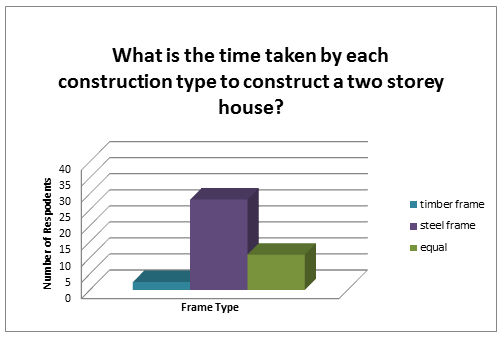
The graph showed that there are about 45 respondents who have responded to our questionnaire. It has been illustrated in the above figure that about 62% of the total respondents have responded that the steel frame takes more time to construct a two-storey residential building than the timber frame building. Only 9.8% said the timber frame takes more time to construct a house. About 52.2% of the respondents have chosen steel framing over timber framing. The engineering firms have agreed that both frames take the same time to construct a two-storey building, with the contribution of 29% of the total respondents.
Question 2:
Which of the following construction types is the cheaper way to construct a two-storey building?
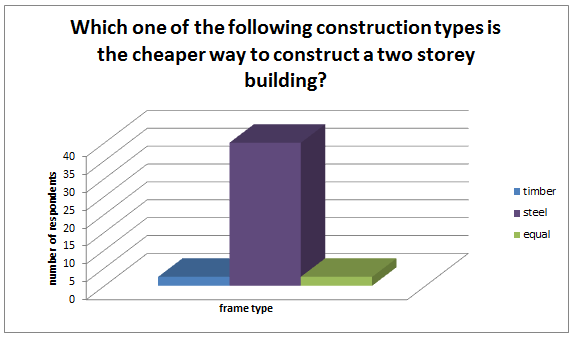
The results from the above graph show that using a steel frame to construct a two-storey building is more expensive than a timber frame. About 87% of the respondents have reported steel as a more expensive construction material than timber frame. About 6.5% of the respondents have reported timber framing as a more expensive material, and the remaining 6.5% stated it as an equally expensive material for constructing two-storey residential buildings.
Question 3:
Which of the construction types requires fewer skilled workers to construct a two-storey residential building?

Many factors determine the number of skilled workers required to construct a two-storey building, i.e., the selected material type. Heavy materials like steel would require more skilled workers. The fabrication and positioning of the frames also determine the required number of skilled workers. The above chart shows that companies and firms have different opinions on construction materials. The majority, about 46% of the respondents, stated that the steel framing needs more skilled workers to complete a two-storey building. About 36.5% responded that equal skilled workers are required to construct the two-storey building. However, the respondents who think that timber frame requires more skilled workers are only 17.5%.
Question 4:
Which of the construction options is more labour-intensive?
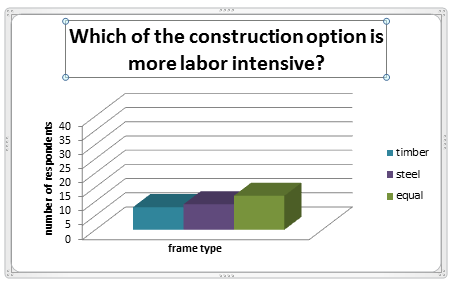
Determining the least and most labour-intensive material is quite a tricky process. The graph showed that about 41% of the respondents agreed that timber and steel frames are equally labour-intensive. 29% of the respondents think timber requires the least intensive labour, while the remaining 30% believe steel is the least labour-intensive construction material.
Question 5:
Which of the construction types produced more waste while manufacturing raw materials?
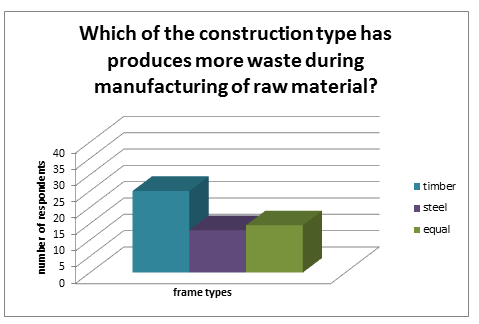
About 60.1% believe timber has produced more waste than raw material production. 17.8% believe that steel is a more waste-producing construction material. Only 22.1% responded timber and steel have the same effect in producing waste (Buchanan and Levine, 1999).
Question 6:
Considering the carbon emissions, which of the construction types most pollutes and harms the environment while constructing a two-storey building?

It has been illustrated from the graph clearly that the steel frame harms the environment greatly and pollutes the atmosphere by a major factor. The amount of carbon emissions is much higher in the case of steel frames than timber frames. About 93.1 of the respondents believe steel is more polluting than timber frames. No responses have been received for the case of timber, which showed it as the best material for constructing residential blocks. A very small percentage, about 6.9%, believes that both frames produce polluting substances equally. The survey results have increased the chances of the timber frame being selected as a more sustainable material. The requirement of a great amount of energy for steel manufacturing has resulted in high carbon dioxide emissions released into the atmosphere.
Question 7:
Considering the durability of the residential houses, which one of the construction options is the best to choose?
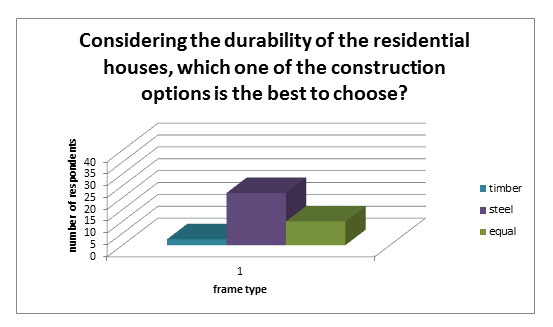
About 29.1% of respondents responded to a similar attribute for timber and steel frames. The steel frame is more durable, as most respondents believed, with a voting percentage of about 63.2%. The remaining 7.7% responded that timber is less durable than steel frames. Thus, it has been proved that steel is the most durable construction material for constructing a two-storey house building.
Question 8:
Considering the earthquakes and strong winds such as hurricanes in a two-storey residential building, which one of the construction options has the ability to withstand the most?
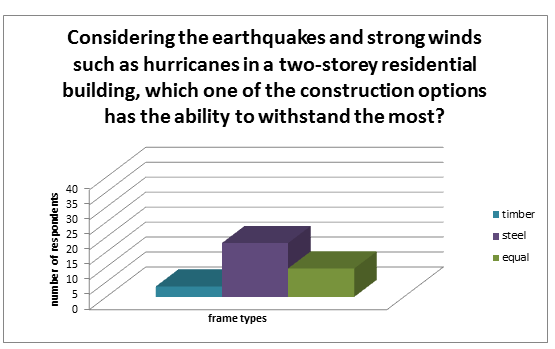
The steel frame has been shown to withstand bad weather conditions, including earthquakes and hurricanes, as more than 56% of the respondents responded this way. The timber frame has a lower ability to withstand harsh weather conditions, and responses gained for this section are about 15.3%. Only 28.7% believe that steel and timber frames have the same ability to withstand harsh weather conditions, i.e. earthquakes and hurricanes.
Question 9:
Considering the market and climate of the United Kingdom, which one of the building materials is best suited for the construction of a two-storey residential house presently?
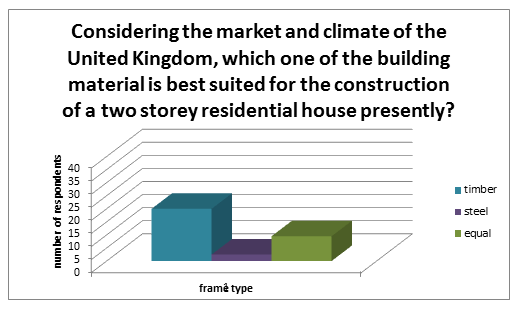
Interesting responses were obtained for this question. The majority of the respondents, with a percentage of about 72.3%, responded that timber is the best material for construction in the United Kingdom. Steel framing has been considered by only 6.9% of the candidates who think it is the best material to construct the two-storey house building. The remaining 20.8% believe that both materials are equally suitable for constructing residential buildings in the U.K.
Question 10:
Considering the market and climate of the United Kingdom, which one of the building materials is best suited for the construction of a two-storey residential house?
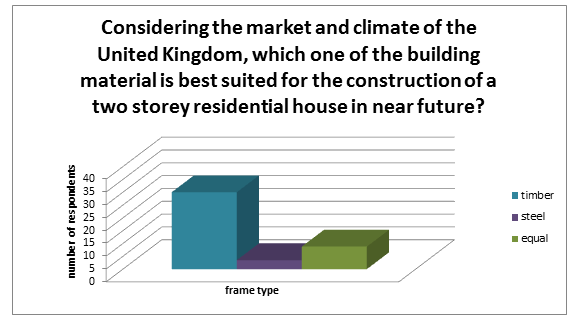
Remarkable results were obtained as an outcome of this question. 69.9% of the respondents believed that timber framing is the best-suited material to construct two two-storey residential buildings. Only 5.7% of the respondents believed the steel frame is the best-suited construction material. A significant difference between the two frames has been found for the steel and timber frame responses, which is about 64.2%. Only 24.4% of the respondents believed that both frames are equally suitable to be used as construction materials for the two-storey houses shortly.
The survey has shown that timber is a very useful material with excellent properties and is ideal for constructing a two-storey residential building.
Analysis and Discussions
The literature review, surveys and case studies have been used to discuss and analyze the data presented in the above sections to compare the timber and steel.
The characteristics and the total area of the floor (135m2) are the same for both the frames in case study 1 and the roof areas, but the load and non-load wall bearings amongst the frames are different, as shown in Table 3-1.
The results of case study 2 indicate the same characteristics, but the difference lies in the floor area, which is a little higher for steel houses than wood houses.
In the case study, 116 workers were required for the steel house, whereas for the timber house, there was a requirement of 114 workers, indicating a higher number of workers for the steel house than the wood house. However, the results of case study 2 are quite the opposite, showing that steel houses analyzing the results of both case studies, it is understood that both the frames had only slight difference in the total number of workers.
Similarly, the results of the survey sort were about the same. The survey results indicate that almost 46% of the respondents agree on the need for more skilled workers for steel framing, whereas 36.5% also agree that both require the same number of workers, with a slight difference of 17.5%. Thus, it can be suggested that the requirement for the total number of workers between the frames is very difficult and may vary between the projects. On the other hand, the results of this survey suggest that the total number of workers required for both frames may be the same during the construction of a two-storey residential building having steel framed buildings. As for the results of case study 1, there is a difference of 3.47% for the number of hours required to construct the timber frame and steel frame, 518 hours for timber frames and 536 hours for steel frame, respectively, indicating that the timber frame is faster to construct as compared to the steel frame. The results of case study 2 showed that 528 hours are needed for constructing the timber frame while the steel frame needs 239 hours, pointing to an increase of 9.3%.
This again demonstrates the quicker construction of timber frames compared to the steel frame. Thus, the results of case studies 1 and 2 agree with each other on the fact that timber framing takes less time to construct a two-storey residential building. Moreover, the survey analysis results helped us make a decisive decision. From the results of question 1 of the questionnaire, it is deduced that to construct a two-storey building, steel frames took more time than timber frames, as out of 45 responses, 62% agreed. Consequently, it is clearly stated that constructing steel frames took a long time, and the survey and literature review results proved that. Case study 2 results also proved the same point of timber frames being cheaper than steel framing, but the results are of a lower percentage. The results of this case study indicate a difference of 7.4% in the cost of both, proving the same point of steel framing being more expensive. The cost has played an important role in the selection of framing along with factors like labour cost, fitting cost, labour cost, and material cost; all are more expensive for steel framing. Question 2 of the survey confirmed that timber frame is less expensive than steel frame. More than 87% of respondents have found timber frames less expensive. Therefore, it is clear that using a timber frame is advantageous in terms of cost as it is cheaper in all the ways concerned for constructing a two-storey building. However, the construction intensiveness is tedious and the same for both frames. Thus, it can be concluded that the labour intensity level is the same for both the steel and timber frames, as most of the respondents chose it. Similarly, considering durability and strength is important for the steel frame. The strength of steel is very high as its strength-to-weight ratio is high for any building using steel in it (Nucon, 2011). The design life for both frames is more than 60 years, but the strength and durability of the steel frame are very high. It can withstand extreme weather conditions like hurricanes and earthquakes, etc. 56% agreed on high durability for steel framing, and respondents chose that extreme weather conditions can be withstood by steel framing with more strength than timber frames. Timber is the only renewable source that can help reduce carbon emissions with carbon dioxide extraction, which is the clear winner in sustainability. Though steel is recyclable, it is a non-renewable resource. Moreover, the energy required for its manufacturing is huge, which emits high levels of harmful radiation. The results of question 5 also proved the point that it produces more raw materials.
Some similarities and differences are shown by both the frames like the number of workers needed for frame building is the same, but the cost of both the frames is drastically varying. Depending on the situation, need and cost, some require more cost while others need less. The same is the case with labour intensity. While considering sustainability, both the frames have excellent results, but timber wood is more renewable.
Conclusion
Upon thoroughly examining the entire dissertation, it is evident that the primary objective has been aptly addressed. The research successfully discerns the optimal frame for constructing a two-storey building, weighing the merits of steel and timber. Rigorous scrutiny of prior literature and reports contributes significantly to the dissertation's research goals. Analyzing two case studies provides valuable insights into both timber and steel frames' positive and negative aspects. Supplementing these findings, a carefully crafted questionnaire enriches the research outcomes. The research unequivocally designates the timber frame as the superior choice for constructing two-storey residential blocks. The decisive factors distinguishing between the two frames are sustainability and cost, as their intrinsic properties present comparable options. While steel frames might be more suitable for high-rise structures, the research underscores that timber frames excel in residential applications. Notably, the prevalent use of timber frames in the United Kingdom is justified by their lower cost and higher sustainability than their steel counterparts. This preference is further accentuated by the environmental benefits of timber, such as its ability to extract CO2 from the atmosphere. Government initiatives promoting sustainable practices, such as planting two trees for every one felled, further underscore the environmentally conscious choice of timber frames. Conversely, the steel manufacturing process, releasing harmful gases, renders it less suitable for residential structures. Moreover, the research highlights timber frames' cost-effectiveness, substantiated by case studies and the questionnaire findings. In summary, the research establishes timber frames as the optimal choice for constructing two-storey residential buildings, considering cost, sustainability, and environmental impact factors.
References
- American Wood Council, (2001). American Forest and Paper Association. Details for Conventional Wood Frame Construction. Journal of Industrial Engineering International, pp.4-13. Available online at: <http://www.awc.org/pdf/wcd1-300.pdf> [Accessed 14 March 2013].
- Buchanan A. and Levine S. (1999), Wood-based building materials and atmospheric carbon emissions. Environmental Science & Policy 2, pp 427-437.
- Corus Construction & Industrial, (2006). Fire resistance of steel framed buildings. Available online at: <http://www.mace.manchester.ac.uk/project/research/structures/strucfire/DataBase/References/Fire%20resistance%20FINAL.pdf> [Accessed 8th March 2011].
- Demonstration home plans (2012), Appendices, Available online at <http://www.toolbase.org/PDF/CaseStudies/steel_vs_wood3-new.pdf> [Accessed 10 April 2013]
- Davis (2013). DavisFrame. About Timber Frame. Available online at: <http://www.davisframe.com/About-Timber-Framing-Post-Beam-Homes.aspx> [Accessed 9 March 2011].
- Ehow (2013). The Advantages of Steel Frame Buildings. Available online at: <http://www.ehow.com/list_6951536_advantages-steel-frame-buildings.html> [Accessed 14 March 2013].
- Ehow (2013). Pros and Cons of Steel Frame Homes. Available online at: <http://www.ehow.com/about_5427844_pros-cons-steel-frame-homes.html> [Accessed 14 March 2013].
- Ehow (2013). Advantages and disadvantages of post and beam construction. Available at: <http://www.ehow.com/info_8488834_advantages-disadvantages-post-beam-construction.html> [Accessed 14 March 2013].
- Environ (2013). Advantages and Disadvantages of Timber Frame Construction. Available online at: <http://www.environ.ie/en/Publications/DevelopmentandHousing/BuildingStandards/FileDownLoad, 1677, en.pdf> [Accessed 14 March 2013].
- FSC Timber Frame, (2013). Benfield ATT Group Timber Frame Buildings, Green Technology. FSC Certified Timber Frame. Available online at:<http://www.benfieldattgroup.co.uk/timber-frame-buildings/green-technology/fsc-certified-timber-frame.html>[Accessed 12 March 2013].
- Home Addition Plus (2013).Platform Framing. Available online at: <http://www.homeadditionplus.com/framing-info/Platform-Framing.htm> [Accessed 12 March 2013].
- Homebuilding, (2013). Homebuilding and renovating.Timber Frame. Available online at: <http://www.homebuilding.co.uk/feature/Timber-Frame-or-Blockwork> [Accessed 11 March 2013].
- Historic Times (2012), Beaufort Historical Association, Vol 52, Issue 2, Available online at<http://beauforthistoricsite.org/Newsletter.pdf> [Accessed 10 April 2013]
- Jeffris, A., Madsen, D.A. and Madsen, D.P., (2010). Architectural Drafting and Design. Common Commercial Construction Materials, Chapter 43. pp.975-1007
- Karjalainen T. Kellomaki S. and Pussinen A. (1994), Role of wood-based products in absorbing atmospheric carbon, Silva Fennica, pp 67-80
- Lam, D., Ang, T D. and Chiew, S P., (2004). Structural Steelwork, Design to limit state theory. 3rd edition. Oxford: Elsevier Butterworth-Heinemann
- Light steel (2013). Volumetric steel frame. Available online at: <http://lightsteel.steel-sci.org/onecase/Case.asp?id=0503> [Accessed 8 March 2013].
- Mehta, M., Scarborough, W. and Armpriest, D. (2009). Building Construction; Principles, Materials, and Systems. Boston: Prentice Hall.
- Murty, C. V. R., Brzev, S., Faison, H., Comartin, C.D. and Irfanoglu, A. (2006). At Risk: The Seismic Performance of Reinforced Concrete Frame Buildings with Masonry Infill Walls. WHE-2006-03, pp. 2-66.
- Nassén J. Hedenus F. Karlsson S. and Holmberg J. (2012), Concrete vs wood in buildings - An energy system approach, Building and Environment, pp 361-369.
- NASH, (2013). National Association of Steel-Framed Housing INC. Cost of the steel frame. Available online at: <http://www.nashnz.org.nz/why_choose_steel/cost.html> [Accessed 14 March 2013].
- PATH (2002), Steel l vs. Wood Cost Comparison Beaufort Demonstration Homes, U.S. Department of Housing and Urban Development Available online at<http://www.huduser.org/Publications/pdf/steel_vs_wood1.pdf> [Accessed 10 April 2013]
- PATH (2002), Steel l vs. Wood Long Term Thermal l Performance Comparison Valparaiso Demonstration n Homes Available online at < http://www.huduser.org/Publications/pdf/steelval_full.pdf> [Accessed 10 April 2013]
- Reduce Your CO2. (2007). We Can Lower Your CO2. Available online at: <http://www.reduceyourco2.co.uk/lower.php> [Accessed 14 March 2013].
Reeb J.A. (1997). Drying Wood – wood product
- products and utilization specialist. Journal of Industrial Engineering International, Vol.3 No.1, pp. 4-27
- Richardson B.A. (1976). Wood in Construction. Lancaster: The Construction Press LTD
- Sathre R. and Gustavsson L. (2009), Using wood products to mitigate climate change: External costs and structural change. Applied Energy pp 251-257
- Scotframe (2013). Timber frame homes. [Internet], Available at: http://www.scotframe.co.uk/web/site/home/home.asp (Accessed 11th November 2011)
- Solotimberframe, 2010. Why Timber Frame. Available online at: <http://www.solotimberframe.co.uk/factsandfigures.html> [Accessed 14 March 2013].
- Steel Framing, (2013). Available online at: http://www.steelframing.org/index.php [Accessed 11 March 2013].
- Sustainable Homes (2013). Timber Frame Housing. Available at: <http://www.sustainablehomes.co.uk/upload/publication/Timber%20Frame%20Housing.pdf> [Accessed 14 March 2013].
- Target Timber, (2013). The advantages of timber frame. Available online at: <http://www.targettimber.co.uk/advantages.php> [Accessed 8th March 2011].
- TATA Steel, (2013). Tata Steel Construction. Sustainable Steel Construction. Journal of Industrial Engineering International.
- Timbercraft Timber Frames Homes, (2013). The history of timber framing. Available online at: <http://www.timbercraft.com/timberframe.html> [Accessed 14 March 2013].
- TRADA, (2011).Timber Research and Development Association. Timber Frame Construction. Journal of Institution of Civil Engineering Library, Vol. 3.
- TRADA, (2002). Timber Research and Development Association. Timber Frame
- TRADA (2006) Timber Research and Development Association. Timber strength grading and strength classes. Journal of Institution of Civil Engineers Virtual Library.
- Whistler Timber Frame, (2007). Available online at: <http://www.whistlertimberframe.com/history/history.htm> [Accessed 15 March 2013].

















